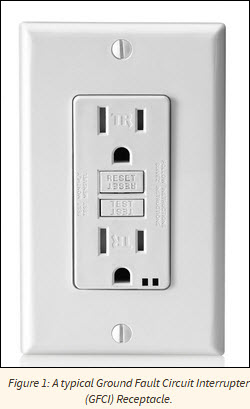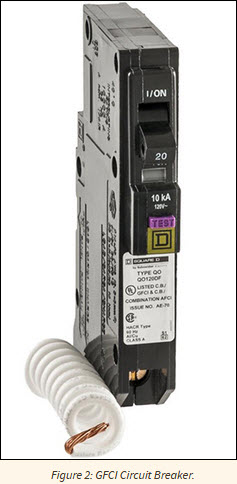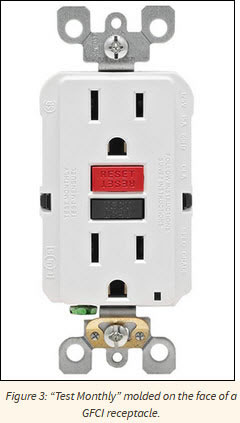articles
Testing... Testing... Is This Thing On?
By: Thomas Kelly
Tel: 803-732-6600
Email Mr. Warren
View Profile on Experts.com.
Many people just take for granted that something is just going to work, and in many cases assume that it will work forever. One such device that does not get enough attention is the Ground Fault Circuit Interrupter (GFCI). Simply put, a GFCI is a protective device that compares the current flowing on the hot and neutral wires of the circuit and will "trip" to disconnect power to the circuit if a small imbalance of current is detected. The imbalance of current is an indication of a dangerous alternate path for the current to flow from a damaged line cord or a fault inside an appliance and constitutes a shock hazard to a person.
The most common two types of GFCI devices found in residential and commercial construction are the GFCI receptacle and the GFCI circuit breaker. All types of GFCI devices are defined by the Underwriters Laboratory (UL) Standard 943. This UL standard lists the conditions that the protective device must operate at including disconnecting power when the current imbalance reaches 6 milliamperes. The standard also requires doing so within 25 milliseconds of when the condition occurs to prevent a shock hazard.

 The National Electric Code (NEC) is the standard which guides electrical installations in the United States. This standard is revised every three years to incorporate new technologies and best practices to improve the safety of electrical systems and installations. Article 210 of the NEC, currently titled "Branch Circuits", contains requirements for providing a GFCI protection to circuits installed in various locations in a building. In general, this type of protection is required in what can be considered "wet areas" exposing an occupant to water while using an appliance, such as kitchens, bathrooms, and laundry areas. Due to the type and location of the circuit, a receptacle or circuit breaker may be used to meet the requirement including one key element in section 210.8 stating that the "ground-fault-circuit-interrupter shall be installed in a readily accessible location". The requirements for GFCIs were first introduced in 1971.
The National Electric Code (NEC) is the standard which guides electrical installations in the United States. This standard is revised every three years to incorporate new technologies and best practices to improve the safety of electrical systems and installations. Article 210 of the NEC, currently titled "Branch Circuits", contains requirements for providing a GFCI protection to circuits installed in various locations in a building. In general, this type of protection is required in what can be considered "wet areas" exposing an occupant to water while using an appliance, such as kitchens, bathrooms, and laundry areas. Due to the type and location of the circuit, a receptacle or circuit breaker may be used to meet the requirement including one key element in section 210.8 stating that the "ground-fault-circuit-interrupter shall be installed in a readily accessible location". The requirements for GFCIs were first introduced in 1971.
So the question is, have you tested every GFCI device in your house? Monthly? The committee for the UL943 Standard didn't think so either and made a change to the standard that effective on June 29, 2015, required the GFCI device to be self-testing. This change is part of the continuous improvement of using technology to improve safety. However, it does not mean that you shouldn't test GFCIs yourself. Go ahead... push the test button.

Thomas J. Kelly, MSEE, MBA, PE, CFEI is a licensed professional engineer in South Carolina, North Carolina, Alabama, Georgia, Florida, and Maryland, and an NCEES Model Law Engineer. Mr. Kelly's 25-year career in electrical engineering includes forensic engineering investigation involving industrial electrical accidents, electrical equipment failure analysis, control system failures, including robotics and automation components and scope of damage assessments. He has conducted investigations for arc flash incidents, electrocution and electric shock accidents and lightning strike evaluations.
©Copyright - All Rights Reserved
DO NOT REPRODUCE WITHOUT WRITTEN PERMISSION BY AUTHOR.


